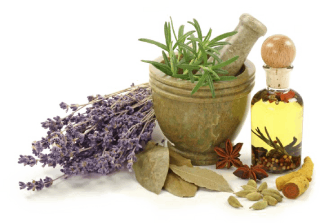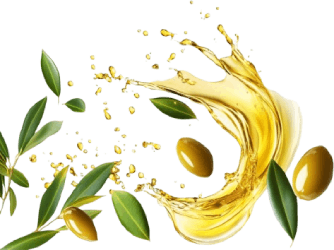The beauty rituals of these indigenous people have been an expression of self-care, spirituality, and respect for the environment. Seeing the value in oral histories and traditions stretching back to centuries ago, such practices have inbuilt flexibility to cater for redefined needs in this day and age. Most of the spas that surround us now draw inspiration from these ancient rituals, which they subsequently transform into treatment options that testify to the centuries-old expertise of their ancestors while at the same time concentrating on healing, mindfulness, and sustainability.
Cultural Significance
The indigenous people beauty rituals are more varied than they seem. Still, they all connect body care with spiritual and worldly relationships. Through these rituals, they express important cultural and natural respect that forms the foundation of identity and well-being. In context, these help adapt traditional ceremonies into modern spa practices.
Deep Connection to Land and Ancestry
It is not only about many of the natural beauty rituals of ancient non-Western cultures, but also about the cities, land, seasonality, and community values. Here, when clay, cedar, sage, sweetgrass, and plant oils are combined, they are not just physically beneficial but also symbolize the spiritual beliefs of different peoples. Typically, such practices are carried out among various cultures, either during a coming-of-age ceremony, rites of passage, or seasonal transitions that then benefit the body, spirit, and environment.
Rituals as Acts of Resistance and Renewal
It has been observed among various Indigenous peoples that maintaining traditional beauty practices is a form of cultural resistance. In contexts where individuals’ bodies and identities are often surveilled or suppressed, claiming and practicing the beauty rituals of their ancestors serve as acts of self-governance or sovereignty. Whether it’s the revival of tattooing among Inuit and Māori women or the use of ochre in ceremonies by Aboriginal Australians, these practices reconnect communities to their lineage and cultural pride.
Traditional Rituals That Inform Modern Spa Treatments
A deep connection with ancient rituals is part of the beauty practices that indigenous people have followed for ages. These traditional customs, which originated from cultural stories and a close relationship with the land, have inspired many spa treatments that focus on purification, healing, and rejuvenation by nature.
Smoke Cleansing and Aromatherapy

Smudging is about an old American tradition, performed to be cleaned by incinerating herbs like sage, cedar, or sweetgrass. Using fire to signify just the beginning and end of an event is easily recognized and indicates the event enhances prayers as well as intentions sent upward through smoke. Aroma-therapy of spas takes cues from certain aspects of this spiritual tradition. They may consist of essential oil diffusers or herbal steam rooms, but these have been fundamentally based on the offerings of ceremonial smoke by forefathers. Ethical practitioners understand this and do not then just reduce smudging to a “relaxation technique.” The ceremonial aspect of the relaxation remains intact.
Clay and Earth-Based Therapies
Natural clay has long been used for cleansing and healing in indigenous cultures. This practice occurs in regions like the Andean areas, the country’s southwest, and African territories. Indigenous clay varieties, such as red, white, or bentonite, offer ways to draw out toxins, reduce inflammation, and help renew the skin. A little mud mask has also been used in rituals or preparations for traveling and hunting protection. Often seen as a ritual, body wrapping or clay detoxification has been passed down through generations and remains central to native cultures. While the mainstream spa industry often evaluates clay based on mineral content or skin benefits, the spiritual or protective significance of this material remains just as important and is not overshadowed by spa-grade clays. As a response, some spas now collaborate with indigenous communities to ethically source purified clay.
Sweat Lodge Ceremonies and Steam Rituals
Many First Nations, Métis, and Inuit groups share the use of sweat lodges, a highly structured and sacred purification ritual performed at high temperatures and steam during a guided prayer ceremony. It helps remove toxins and psycho-emotional debris from the body, usually led by a guide or elder. Sweat lodges are typically built with domes made from natural materials, symbolizing new beginnings and transformation.
While today’s spa industry offers saunas, steam baths, and hammam-inspired treatments, sweat lodges remain tightly restricted ceremonial spaces in most indigenous cultures. Indigenous-centered spas or healing centers are providing some adapted experiences, clearly distinguishing steam services from wellness treatments and traditional healing ceremonies, which should not be commercialized or performed by anyone who is not properly trained.
Plant-Based Oils and Skin Remedies

Traditional beauty care historically includes oils, infusions, and salves made from native plants like oil of andiroba, copaiba, and acai, used in Amazonian communities for their skin-nourishing effects and ability to combat environmental stress. Similarly, the Inuit use seal or whale oil to endure the Arctic climate, while other groups have long applied bear grease, pine resin, or tallow to strengthen the skin. Today, modern botanical skincare emphasizes ingredients such as argan, marula, and jojoba, many of which are sourced from indigenous territories. These oils connect to their traditional uses like moisturizing, healing, and skin preservation. However, a key concern is ensuring that market demand for such products does not lead to ecosystem depletion or exploitation of traditional knowledge. This increasingly involves fair trade programs, certifications, and Indigenous-led cooperatives.
Respectful Integration and Collaborative Practices
It encourages sharing and respect for rights and fostering partnerships rooted in the tradition of indigenous peoples in the health system where the indigenous communities navigate.
Avoiding Appropriation, Encouraging Respect
Spa retail is trying to instill a story about its products, thus cultural appropriation is becoming a slippery slope. Ideas that come from copying sacred practices and adopting traditional motifs without permission or society without enough depth become the very ideas that reduce the value of a product. The most promising outcomes result from intent, understanding, and willingness to conduct business transparently. So, instead of your usual spa decorations, put together something indigenous and receive wisdom with wellness-in providing more enduring and respectful relationships.
Such interventions include giving recognition, sharing profits, and supporting wellness projects by Indigenous Peoples. Sometimes spas invite guest healers or procure ingredients from Indigenous producers, while there are even spa-centric acknowledgments of land.
Indigenous-Led Wellness Movements
Indigenous entrepreneurship and intellectual capital are gaining prominence as they develop brands, spas, and experiences that reflect their communities’ values. Increasingly, their business efforts incorporate traditional teachings with modern science, such as using herbs in skincare or offering trauma-informed retreats. To support these initiatives, the Indigenous Tourism Association of Canada promotes enterprises that facilitate cultural reconnection and contribute to healing. By integrating indigenous voices into legitimate frameworks, the wellness industry shifts from extraction to empowerment, utilizing ancient knowledge under its own terms.
The Essence of Indigenous Influence
Cosmetology, with its emphasis on fine complexion, symbolized strong cultural ties to nature, community, and spiritual well-being. Rituals such as smoke purging, the use of soil, and plants for healing inspire modern spas. However, while adapting these traditions to today’s practices, it is crucial to practice proper cultural sensitivity, ethical sourcing, and collaboration with Indigenous communities. As the spa industry evolves, it is important to remember the roots of these traditions and support Indigenous initiatives, ensuring that ancient knowledge remains alive, respected, and empowered in the current context.

